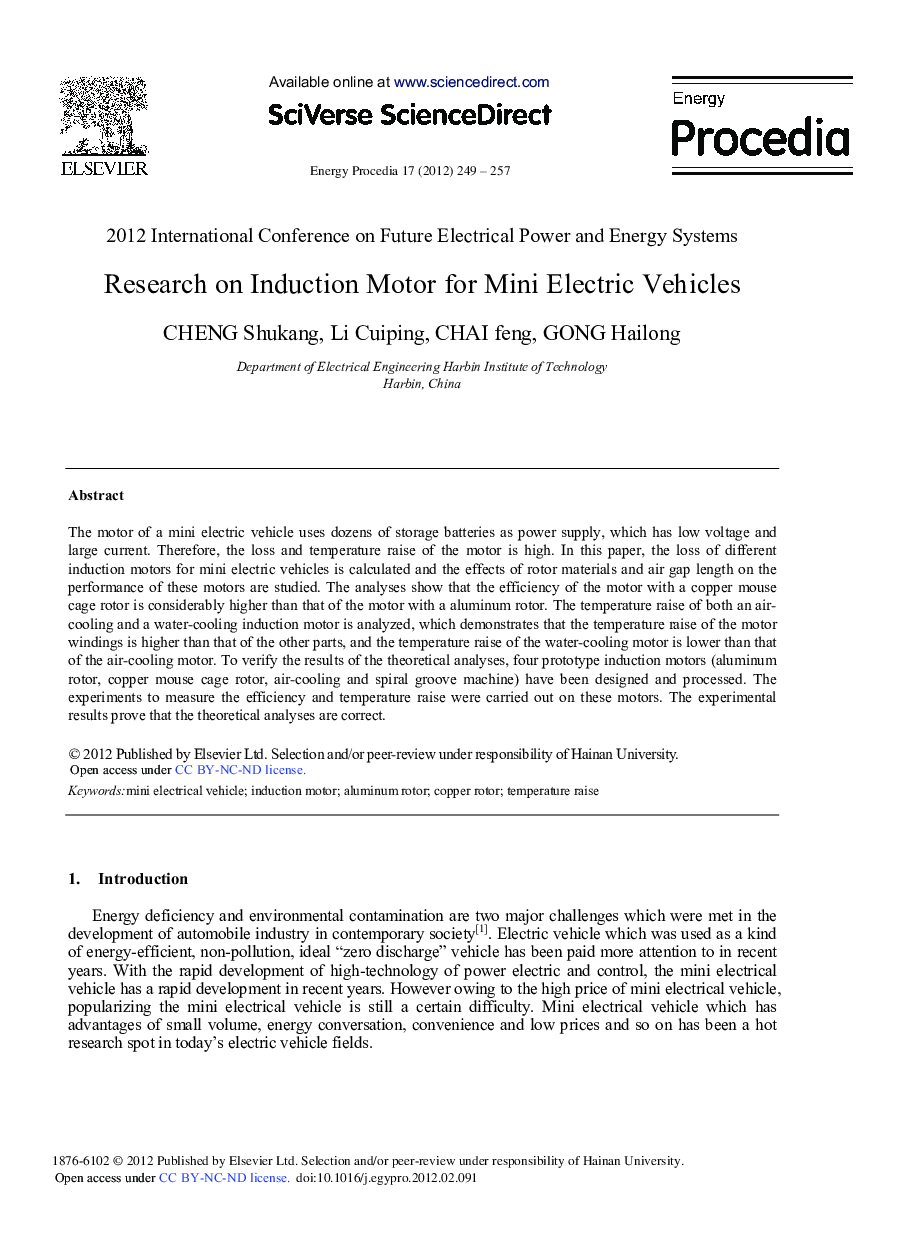| Article ID | Journal | Published Year | Pages | File Type |
|---|---|---|---|---|
| 1513667 | Energy Procedia | 2012 | 9 Pages |
The motor of a mini electric vehicle uses dozens of storage batteries as power supply, which has low voltage and large current. Therefore, the loss and temperature raise of the motor is high. In this paper, the loss of different induction motors for mini electric vehicles is calculated and the effects of rotor materials and air gap length on the performance of these motors are studied. The analyses show that the efficiency of the motor with a copper mouse cage rotor is considerably higher than that of the motor with a aluminum rotor. The temperature raise of both an air-cooling and a water-cooling induction motor is analyzed, which demonstrates that the temperature raise of the motor windings is higher than that of the other parts, and the temperature raise of the water-cooling motor is lower than that of the air-cooling motor. To verify the results of the theoretical analyses, four prototype induction motors (aluminum rotor, copper mouse cage rotor, air-cooling and spiral groove machine) have been designed and processed. The experiments to measure the efficiency and temperature raise were carried out on these motors. The experimental results prove that the theoretical analyses are correct.
